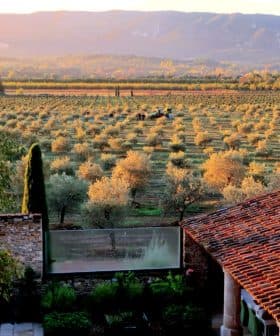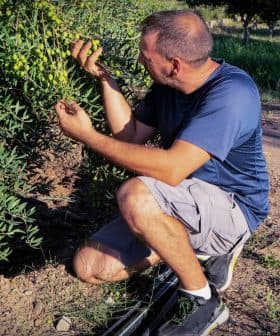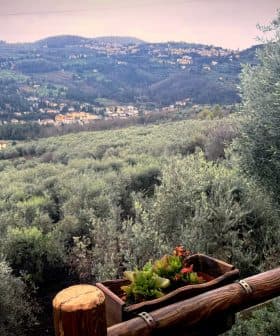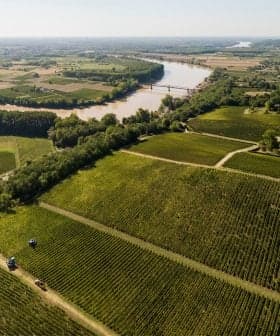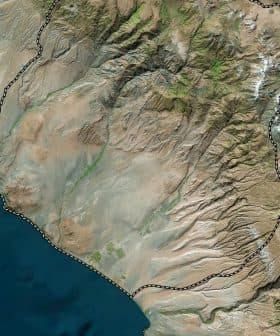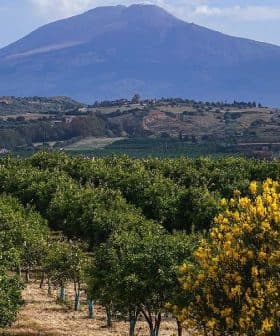Recovery of Traditional Olive Groves Stimulates French Oliviculture
French olive growers are working on recovering traditional olive groves as a means to strengthen the sector.
 Ancient olive grove in Pont du Gard
Ancient olive grove in Pont du GardFrance’s Interprofessional Body for Olive Oil (Afidol) is focusing on recovering and renovating traditional and mountain olive groves to make the country’s olive industry more profitable, which has already contributed to preserving natural heritage and increasing olive cultivation in recent years. The revitalization of traditional olive landscapes in France has led to the preservation of local olive varieties, increased environmentally sustainable practices, and invigorated the sector, generating revenue through various olive products, festivals, and oleotourism.
France’s Interprofessional Body for Olive Oil (Afidol) is focusing on the recovery and renovation of its traditional and mountain olive groves as a means to make the country’s table olive and olive oil industry more profitable.
The recuperation of olive landscapes in France has already contributed to the preservation of its natural heritage and olive cultivation has become one of the very few agricultural activities to grow in recent years.
Traditional olive groves are areas with low density plantations (between 200 to 300 trees per acre), low to medium yields (between 5.5 to 11 tons of olives per acre) and contain trees with an average age of more than 25 years.
See Also:Olive Tree CultivationThey usually are not subject to irrigation and are typically allowed tog row more naturally, often resulting in irregular production. Traditional groves located on high slopes must be harvested manually, forcing growers and producers to focus on the oils’ added-values in order to compensate for higher production costs.
Olive cultivation in France consistently declined throughout the eighteenth and nineteenth centuries as a result of severe weather calamities, lower profit margins, increased competition from the expansion of vineyards and other problems within the sector.
From 1840 to 1929 the number of olive trees decreased from 26 million to 13.7 million. In 1956, frost destroyed millions of olive trees forcing many olive growers to abandon cultivation, which caused many olive mills to close.
After this long decline, oliviculture in France began to recover after the 1980s, when local olive products began to be appreciated again. The following recovery of olive landscapes has been a pivotal element of this resurgence.
From the late 1980s through 2010, France began to rehabilitate these abandoned groves, cleaning parcels of land, regenerating old olive trees and the terraces where they were planted.
More environmentally friendly practices were introduced, enhancing the appreciation of the groves’ heritage value and granting olive trees a higher visibility in landscapes, local agriculture, and also as ornament.
Olive trees preserved their old density and varietal traits in the recovered landscapes, but their height was reduced and shape altered to facilitate cultivation and increase production.
From 1988 to 2011, the number of olive trees grew from 3.4 to 5.1 million and the planted olive surface from 99,000 acres to 136,000 acres. This made olive cultivation one of the few agricultural activities that has grown in southern France, more so in the Languedoc-Roussillon region than in the Alpes-Maritimes.
Mediterranean Landscapes and Terroir (Patermed) was a research program that sought to promote the quality of vineyard and olive grove landscapes within their terroirs and helped in their recovery and rehabilitation.
This stimulated a greater engagement of old and new growers in the sector. According to figures from 2014, there are 35,000 olive growers in France, 32 percent of whom are professionals; among these only a very small portion is devoted solely to oliviculture. The French olive sector is characterized by smallholdings.
Afidol is providing olive growers training in cultivation techniques, such as pruning, harvesting from traditional olive groves and shaping the trees to facilitate their year-round management. The entity is also educating growers and producers on how to handle a variety of tools that can help accelerate manual picking.
The organization also promotes agricultural practices that are environmentally sustainable, including soil management and appropriate uses of fertilizers. Twenty-five percent of the olive surfaces that are cultivated by professional growers are now managed biologically.
Traditional olive landscapes have an economic value because of the foods they produce are currently in demand among more environmentally conscious consumers and and they help to preserve natural landscapes.
The recovery of abandoned trees has also helped preserve local olive varieties, such as the Estoublonnaise, granting authenticity and higher value to the oils produced in the region. Aglandau and Picholine are other varieties found in traditional olive groves.
The revitalization of olive growing in France is helping to invigorate a sector that generates revenue through table olives, olive oils, other olive products, festivals and oleotourism.


